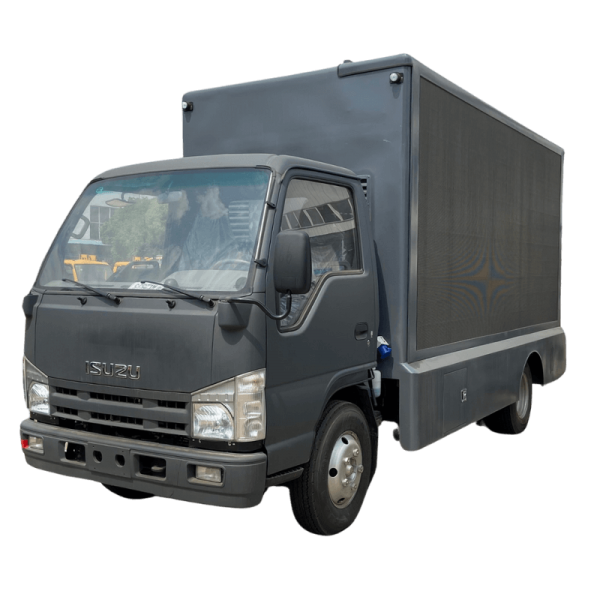Introduction
Water distribution is a critical component of ensuring access to clean and safe water for communities around the world. In many areas, especially in rural or remote regions, traditional water distribution systems may be inadequate or non-existent. Water tank trucks play a vital role in addressing this challenge by providing a flexible and mobile solution for delivering water to areas in need. This article will explore the functions, benefits, and considerations of water tank truck water distribution systems, highlighting their importance in enhancing water access and efficiency.
Functions of Water Tank Truck Water Distribution Systems
Water tank trucks are specially designed vehicles equipped with large tanks that can carry and transport significant amounts of water. These trucks serve as mobile water storage and distribution units, capable of delivering water to areas that may not have access to a reliable water supply. The primary functions of water tank truck water distribution systems include:
1. Transporting Water: Water tank trucks are designed to transport water from sources such as reservoirs, wells, or treatment plants to the designated distribution points. The tanks on these trucks vary in size, with capacities ranging from a few hundred to several thousand gallons, depending on the specific needs of the community or region.
2. Distributing Water: Once the water tank truck reaches its destination, it can distribute water directly to households, communities, or emergency response sites. The distribution process may involve using hoses, pumps, or gravity-fed systems to deliver water to individual homes or centralized collection points.
3. Emergency Response: Water tank trucks are essential in emergency situations such as natural disasters, droughts, or infrastructure failures where access to clean water is compromised. These trucks can quickly mobilize to provide immediate relief by delivering water to affected areas, helping to prevent dehydration and waterborne diseases.
Benefits of Water Tank Truck Water Distribution Systems
Water tank truck water distribution systems offer several benefits that make them a valuable tool for improving water access and distribution efficiency. Some of the key advantages include:
1. Mobility and Flexibility: Water tank trucks are highly mobile and can access remote or hard-to-reach areas that may not be served by traditional water infrastructure. This flexibility allows for targeted water delivery to communities in need, especially in rural or disaster-affected regions.
2. Rapid Deployment: In emergency situations, such as natural disasters or humanitarian crises, water tank trucks can be quickly deployed to provide immediate relief. Their ability to transport large volumes of water ensures timely access to clean water for affected populations, helping to prevent water-related illnesses and fatalities.
3. Cost-Effectiveness: Water tank trucks offer a cost-effective solution for water distribution, particularly in areas where establishing permanent water infrastructure may be impractical or prohibitively expensive. By utilizing existing https://www.heli-truck.com/wp-content/uploads/2024/07/Sinotruk-Howo-Road-Sweeper-Truck-picture-1.png and transportation networks, these trucks can deliver water efficiently without the need for extensive construction or maintenance.
4. Customization and Versatility: Water tank trucks can be customized to meet specific water quality standards, storage capacities, and distribution requirements. This versatility allows operators to adapt the system to varying needs, whether for routine water delivery to remote communities or emergency response in crisis situations.
Considerations for Implementing Water Tank Truck Water Distribution Systems
While water tank truck water distribution systems offer numerous benefits, several considerations must be taken into account to ensure their effective implementation and operation. Some key considerations include:
1. Water Quality and Treatment: It is essential to maintain water quality standards during transportation and distribution to prevent contamination or the spread of waterborne diseases. Water tank trucks should be equipped with appropriate filtration and disinfection systems to ensure the water remains safe for consumption.
2. Maintenance and Inspection: Regular maintenance and inspection of water tank trucks are crucial to prevent leaks, corrosion, or mechanical failures that could compromise the system's reliability. Routine checks of pumps, hoses, valves, and tanks should be conducted to identify and address any issues promptly.

3. Training and Safety: Operators and personnel responsible for operating water tank trucks should receive proper training on handling and distributing water safely. Safety protocols, including procedures for loading, unloading, and transporting water, should be established to minimize risks to both personnel and the community.
4. Coordination and Communication: Effective coordination and communication among stakeholders, including government agencies, NGOs, and local communities, are essential for the successful implementation of water tank truck water distribution systems. Clear protocols for requesting water delivery, scheduling routes, and reporting emergencies should be established to ensure a coordinated response.
Conclusion
Water tank truck water distribution systems play a vital role in enhancing water access and distribution efficiency, particularly in underserved or disaster-affected areas. These systems offer mobility, flexibility, and rapid deployment capabilities that make them a valuable tool for delivering clean and safe water to communities in need. By considering factors such as water quality, maintenance, training, and coordination, stakeholders can maximize the benefits of water tank trucks and ensure sustainable water supply solutions for the future. As the demand for reliable water access continues to grow, investing in water tank truck systems can contribute to building resilient and inclusive water distribution networks that benefit communities worldwide.
